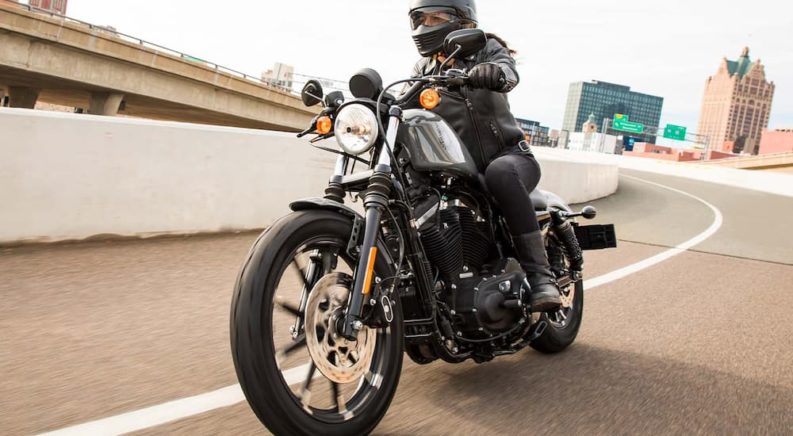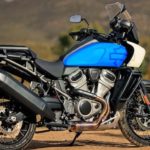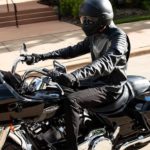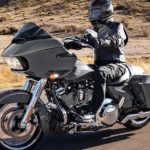In the world of Hollywood, casting often plays a huge role in a film’s success. From suave leading men to quirky comic relief and adorable child actors, the people chosen for each part can be the make-or-break factor between a blockbuster hit and a disappointing flop. This same thinking also applies to a movie’s non-human stars, and we’re not talking about Air Bud or Lassie. The iconic vehicles that grace the silver screen can go a long way in creating a narrative that enraptures the audience, lending a sense of reality to the cinematic world while injecting some high-octane excitement into the proceedings.
From fantastical creations like the Millenium Falcon or Batmobile to real-world models like “Ghostbusters” Cadillac Miller-Meteor or the Toyota Supra from “The Fast and The Furious,” these models often garner just as much of the spotlight as the well-paid actors behind the wheel. With over 100 years of history to its name, Harley-Davidson motorcycles have appeared in too many films to count. With their imposing stance, classic looks, and the fact that they’re essentially shorthand for “badass,” the iconic bikes are a particularly useful prop in the moviemaking world. Join us as we delve into the Harley-Davidson archives to revisit some of our film favorites, and by the end of this article, you’ll be headed full throttle for your Harley-Davidson dealer (after a quick trip to the mall to find a passable copy of Schwarzenegger’s leather jacket).
1951 Harley-Davidson Panhead Chopper
Film: Easy Rider (1969)
No list of iconic Hollywood Harley-Davidsons would be complete without mentioning what many consider to be the quintessential motorcycle film of the modern age, “Easy Rider.” The movie, which was written by stars Peter Fonda and Dennis Hopper and directed by Hopper, not only does a fantastic job of encapsulating the counterculture of the late ’60s but also stands as one of the earliest examples of independent film success.
Produced at a cost of just $400,000, the film would go on to make over $60 million worldwide as audiences were drawn to the raw, unvarnished look at the darker side of the hippie lifestyle. “Easy Rider” has become an enduring classic of the road film genre, capturing the freewheeling, adventurous spirit that draws so many to the world of motorcycle touring (albeit with fewer stoppers in jail cells and chance meetings with Jack Nicholson). While there are certainly some admirable aspects of Fonda and Hopper’s cross-country journey, the film also provides some solid motivation for staying in your lane and not ticking off the locals.
Easy Rider follows Fonda and Hopper as they travel through the American South and Southwest with stops that include a diner, cemetery, commune, jail cell, and, eventually, a Mardi Gras celebration in the streets of New Orleans. Motorcycles feature heavily throughout the film as Fonda and Hopper initially ride European-made dirt bikes before ditching them for heavily modified Harley-Davidson Panhead models. The original bikes––a 1949, 1950, and 1952 Harley-Davidson FL Hydra-Glide––were designed and built by legendary chopper builders Cliff Vaughs and Ben Hardy.
While the chopper modifications set the movie’s bikes apart from run-of-the-mill Harleys, it’s Fonda’s American Flag-painted gas tank stuffed with the duo’s ill-gotten gains that became the film’s most lasting image. Known as the “Captain America” bike, the original was demolished as part of the film’s final scene but rebuilt decades later by actor Dan Haggerty, who had a cameo in the film. The refurbished Captain America bike was put up for auction in 2014 and, after selling for $1.35 million, became the most expensive motorcycle ever sold.
Aside from inspiring many a road trip, the “Easy Rider” Panhead introduced the masses to the custom chopper concept. With its towering sissy bar, stretched-out wheelbase, and pulled-back handlebars, the Harley-Davidson showed riders what was possible with enough determination and some fabrication skills. Customization has always been a big part of motorcycle culture, but “Easy Rider” can be credited with bringing it into the mainstream as the Captain America bike would go on to spawn no shortage of imitators following the film’s release.
1975 Harley-Davidson Electra Glide
Film: Twin Peaks: Fire Walk With Me (1992)
Fans of the classic, if short-lived, David Lynch series “Twin Peaks” were treated to a follow-up movie in the form of 1992’s “Twin Peaks: Fire Walk With Me.” The film and series follow the spooky goings-on in a small Washington town as FBI agent Dale Cooper searches for the killer of homecoming queen Laura Palmer…and a damn fine cup of coffee. Complete with supernatural phenomena, fish-filled coffee pots, one-eyed drapery store owners, and a Log Lady, the series and film are beloved for their odd tone and questionable acting.
While the film and series don’t excessively focus on motorcycles, the same cannot be said of Twin Peaks resident sad boy James Hurley. Laura Palmer’s secret boyfriend is a man who loves his bike––in this case, a 1975 Harley-Davidson Electra Glide––and with Palmer gone, he focuses on little else throughout the series (aside from seducing the odd housewife along with Laura’s best friend and her cousin). In the words of Laura Palmer herself, “James is sweet, but he’s so dumb, and right now, I can only take so much of sweet.”
Hurley has clearly seen one too many James Dean and Marlon Brando movies in his day and spends most of his screen time perfecting his pout while tooling around the mountainous roads of Twin Peaks on his Electra Glide in stylish dark shades. The one-dimensional characters are commonly cited as one of the series’ weakest, but hey, if you had a bike like that 1975 Harley-Davidson Electra Glide, you might be tempted to make it your whole personality too.
Hurley is one of the last people to see Palmer alive when she jumps off his Harley to run into the woods, where supernatural forces––or maybe just a crazy guy––lead to her untimely end. The bike does play an important role in the series at one point when FBI Agent Cooper notices the reflection of Hurley’s Electra-Glide in Laura Palmer’s eye on a video shot while the two were on a picnic (we’ll leave the plausibility of that one to the experts, though it seems a little too CSI for our liking). Better yet, “Twin Peaks” even references “Easy Rider” at one point when, in trying to direct Sheriff Harry S. Truman to a stash of Palmer’s drugs hidden in Hurley’s bike, someone hints that Hurley is an “easy rider.”
The Electra-Glide was one of the first Harley-Davidson FL models to feature the Shovelhead engine, which gave the bike a ten percent power increase over prior Panhead versions. Named for its electric starter, the Electra-Glide made Harley-Davidson a little more accessible to the average rider. The Electra-Glide is also notable for its fork-mounted fairing, which became known as the “batwing” fairing and has since become a staple on the popular model. Perfect for navigating twisty passages of the Pacific Northwest, running from your problems, or going over to your dead ex-girlfriend’s house to compose a song with her best friend and sister, the Electra-Glide was truly wasted on a tool like James.
1990 Harley-Davidson Fat Boy
Film: Terminator 2: Judgment Day (1991)
The Harley-Davidson Fat Boy might be one of Hollywood’s most famous Harley-Davidson models thanks largely to the monumental success of “Terminator 2: Judgment Day”. The second, and some say finest, movie in the Terminator franchise brought in over $500 million worldwide, earning the Fat Boy a degree of notoriety that few motorcycles can match.
After a quick retinal scan of a local biker bar, Arnold––or rather, Cyberdyne Systems Model 101, colloquially referred to as the T-800––spots his target: a 1990 Harley-Davidson Fat Boy. Maybe it was the bike’s low riding position, fat tires, and wide front forks that drew his attention, but we’d put our money on the fact that the Fat Boy’s chrome-heavy exterior spoke to the robot’s own metallic inner workings.
Either way, there is no dissuading the T-800 once he knows what he wants. Despite asking quite reasonably, “I need your clothes, your boots, and your motorcycle,” the Austrian automaton is rudely denied by the Fat Boy’s rightful owner. A quick skirmish ensues that sees the T-800 rough up a few bikers, break a bone or two and throw the bike’s owner on a hot stove, but in the end, the keys are handed over. Some black wraparound shades and a pump-action shotgun complete the look, and before you can say “hasta la vista,” the T-800 is burning rubber on his way to find Sarah Connor.
While the Fat Boy might have a classic design, it was actually made just one year prior to the film with a 1990 debut. The Softail design allowed Harley-Davidson to meld the look of a classic motorcycle with the comfort of a modern suspension, making for an exceedingly comfortable ride that didn’t have to make any sacrifices in the looks department. The Fat Boy is a great alternative to a full touring model, with less weight and bulk making it the go-to choice for cruising. Developed by Willie G. Davidson, the grandson of Harley-Davidson founder Arthur Davidson, the Fat Boy was part of Harley-Davidson’s attempt to refresh its designs for a new era.
The original “T2” motorcycle eventually made its way to Milwaukee’s Harley-Davidson Museum, where it’s on display with other items from the movie. The bike isn’t in rideable condition, and features “significant production wear from filming,” but it is a must-see for any fans of Harley-Davidson, Arnold, or Hollywood history. “The ‘T2’ motorcycle is a great addition to our collection, and it signifies one of the most important film roles our product has played in pop culture history,” said Bill Davidson, vice president of the Harley-Davidson Museum. “We are excited to put the motorcycle on display for visitors to see, and for some, take them back to 1991 and a time when this iconic film ruled the box office.”
An American Icon Through and Through
From the Terminator’s famous Fat Boy to James Hurley’s Electra-Glide and Peter Fonda’s “Captain America” chopper, Harley-Davidson is no stranger to the silver screen. While these motorcycles might not always be the star of the show, they can go a long way in fleshing out the characters who mount them, lending a certain mystique that can only come from a storied brand like Harley-Davidson. The three films mentioned above are just a taste of Harley-Davidson’s Hollywood moments. If you’re looking to make your own motorcycle memories, head down to your local Harley-Davidson dealer, where there are plenty of models that’ll give you a chance to play your own starring role.




